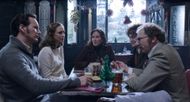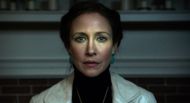With the release of The Conjuring in 2013, audiences were not only treated to yet another house-haunting tale. They were served something much more spine-tingling: a purported true story. That five-word phrase — “Based on the true case files” — did more than turn heads.
It psychologically anchored the film, making it far more difficult to dismiss, and putting a spin on an already scary story into something terrifyingly perilous. For over a decade, The Conjuring Universe has used the same technique to produce sequels, spin-offs, and a dedicated fanbase.
But as viewers’ digital savviness grows, this once-compelling piece of marketing is starting to fall apart. In the age of instant fact-checking and deep dives on Reddit, does the so-called “true story” still provide creative leverage, or has it turned into a marketing snare?
Fear sells, and truth seals the deal

The horror genre has always flirted with reality. Filmmakers have used the “true story” tag as a means to promote their films, as seen in The Exorcist and The Texas Chainsaw Massacre. The Conjuring takes a different route. At the core of its terror lies the life story of Ed and Lorraine Warren, self-proclaimed demonologists who documented their supernatural encounters like court files.
The brilliance of the marketing didn’t rest solely in attaching a ‘true story’ label. Rather, it was how the films focused on it within the plot's core. Through interviews presented in a documentary fashion, The Conjuring gave off the vibe of a dramatized testimonial instead of a scripted film. The strategy restrained the audience from distinguishing between reality and a movie, and as a result, horror became not just possible, but unavoidable.
Why “true” horror hurts more

The comprehension of experience driven by reality exacerbates fear, has always been understood by psychologists. The term "this actually happened" serves a purpose in the narrative and changes the entire setting. Suddenly, the haunted house isn’t just in the movie—it could be your house. The demon isn’t just attacking a fictional family; it can target yours.
This is exactly how The Conjuring mastered the reveal. Perceived threats instinctively trigger a stronger response than fictional ones, and every brain knows that. Throw in some mystique of the 1970s, grainy photos, and real names, and you have a masterpiece of emotional manipulation. The aftermath of such scares is far more interesting than the whispers of, What if it is real?
Enter: The age of skepticism

But now things are different. With the popularization of the internet, digital literacy, and fact-checking during the 2010s, people began to research things more deeply. For better or worse, many Googled the day after The Conjuring was released.
As time passed, blogs and even YouTube started to become platforms for people to voice their opinions. These platforms were now filled with content that made people question the authenticity of the Warrens’ claims. Most paranormal researchers criticized the films for numerous inconsistencies.
Numerous factual gaps could also be pointed out. Some self-proclaimed skeptics delicately flagged the history of exaggeration or downright lies painted by the creators. All of a sudden, the so-called true story felt like nothing but a narrative with a creatively forgiving twist.
While numerous people undoubtedly were disappointed by the lack of a compelling myth, other spectators soaked in the reality challenge that blurred the lines between myth and haunting.
The Conjuring universe’s double-edged sword

As the franchise broadened its scope with Annabelle, The Nun, and The Curse of La Llorona, the label “based on a true story” became more and more strained. After all, how much of a Hollywood exorcism could possibly be real?
Yet the fandom and marketing machine never stopped. Trailers still rely on faux archival footage. Interviews still talk about the Warrens. Posters continue to whisper “true events” in menacing fonts. But with every film released bearing the “truth” title, more and more people start to question its legitimacy.
In an age where the dissemination of false information poses a problem, customers have been transformed from passive consumers into detectives. One eye is fixed on the action while the other is on the internet.
So, does it still work?

The solution isn't straightforward.
The term “true story” is still lingering in some mindless audiences. It adds to the horror film's haunting ambiance. Well, a feeling that something sinister might have seeped through the screen. But for a rising portion of the public, especially the younger digital natives, it invokes doubt before excitement.
This puts The Conjuring Universe in a difficult position. Rely too much on realism, and you risk criticism when the skeletons don't line up in the closet. Disregard it, and you lose an important mental edge.
Conclusion: Between belief and brand

The Conjuring series not only popularized a horror subgenre but also generated a system of faith. It was an idea that real life was inhabited by ghosts, and the screen in the cinema was just a kind of mirror. Indeed, authentic facts were the most widely believed.
Yet now, when every claim can be thoroughly investigated at that moment, such a belief is becoming more difficult to carry. The tagline "true story" has changed its meaning. Now it’s a bet. And for the people in charge of The Conjuring Universe, this could be the most terrifying thing that can happen.
Love movies? Try our Box Office Game and Movie Grid Game to test your film knowledge and have some fun!
